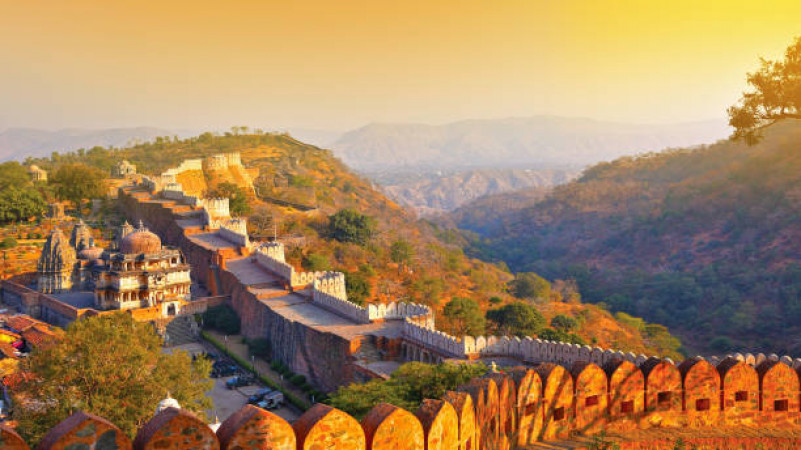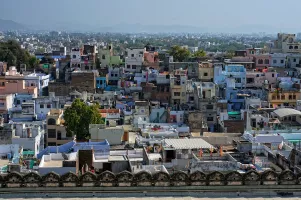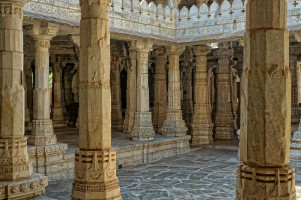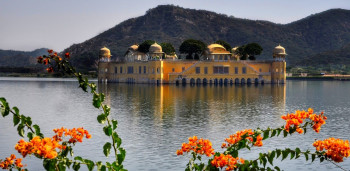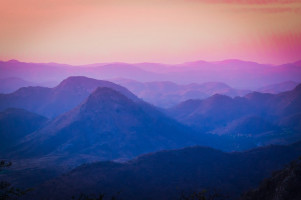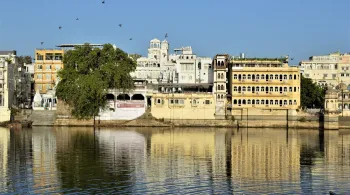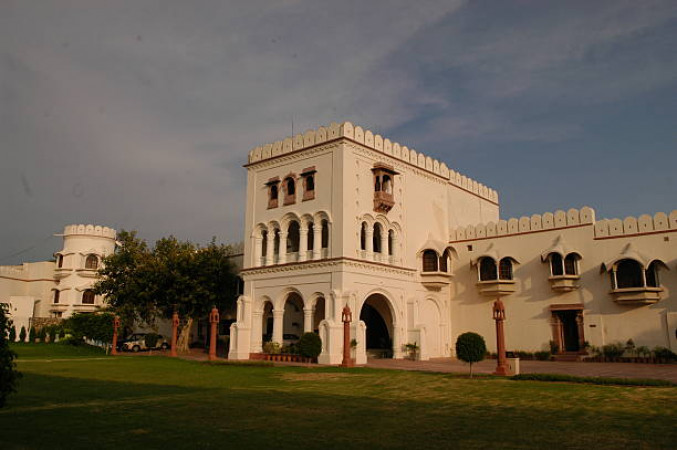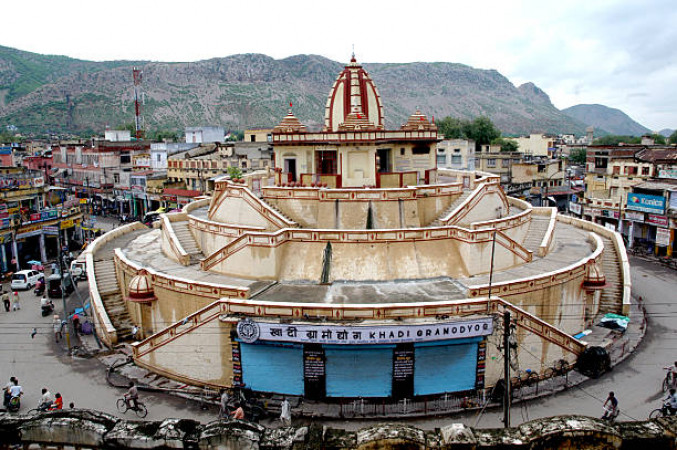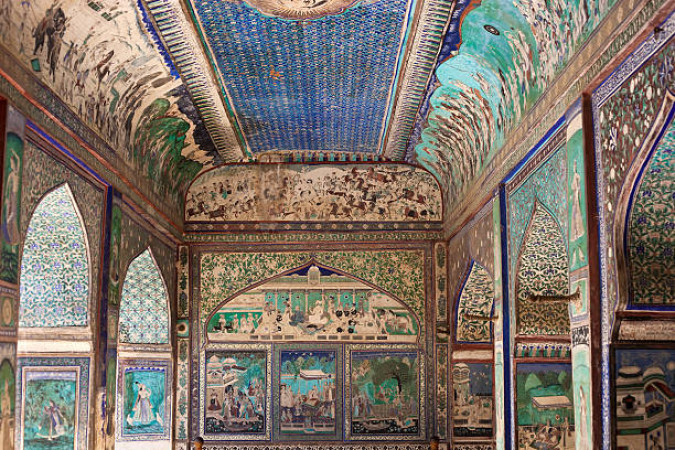Kumbhalgarh Travel Guide
Kumbhalgarh, located in the state of Rajasthan, India, is a renowned historical destination known for its majestic fort, rich cultural heritage, and scenic beauty. The region holds great significance due to its historical importance as a former stronghold of the Mewar kingdom. The Kumbhalgarh Fort, a UNESCO World Heritage Site, is the second-largest wall complex in the world, making it a must-visit for history buffs and architecture enthusiasts.Top Attractions in Kumbhalgarh
- Kumbhalgarh Fort
- Badal Mahal
- Ranakpur Jain Temple
- Kumbhalgarh Wildlife Sanctuary
- Vedi Temple
Kumbhalgarh is Famous for
The Kumbhalgarh Fort is what this destination is most famous for, with its massive walls and intricate architecture attracting visitors from around the world.Top Attractions in Kumbhalgarh
- Exploring the Kumbhalgarh Fort
- Enjoying the panoramic views from Badal Mahal
- Visiting the intricate Ranakpur Jain Temple
- Spotting wildlife at Kumbhalgarh Wildlife Sanctuary
- Experiencing the serenity of Vedi Temple
What's Great about Travelling to Kumbhalgarh?
- Rich historical and cultural experiences
- Breathtaking views of the Aravalli Range
- Opportunities for wildlife sightings
- Authentic Rajasthani cuisine
- Peaceful and serene atmosphere
What's Not So Great about Travelling to Kumbhalgarh?
- Limited nightlife and entertainment options
- Extreme weather conditions in summer
- Remote location may require long travel times
- Language barriers for non-Hindi speakers
- Limited shopping opportunities
Travel Tips for Kumbhalgarh
- Carry sufficient water and sunscreen
- Respect local customs and traditions
- Plan visits to the fort during cooler parts of the day
- Book accommodations in advance, especially during peak tourist seasons
- Use local transportation options for a more immersive experience
Important Kumbhalgarh trip information
- Ideal Duration: 2-3 days
- Best Time to Visit: October to March
- Nearby Airports and Railway Stations: Maharana Pratap Airport (Udaipur), Falna Railway Station
Top 5 Places to visit in Kumbhalgarh
Per Person
9,900
*EXCLUDING APPLICABLE TAXES 3.9 Ratings
( 74 Reviews )
( 74 Reviews )
Per Person
21,546
*EXCLUDING APPLICABLE TAXES 5.0 Ratings
( 396 Reviews )
( 396 Reviews )
Per Person
18,714
*EXCLUDING APPLICABLE TAXES 5.0 Ratings
( 396 Reviews )
( 396 Reviews )
Per Person
18,362
*EXCLUDING APPLICABLE TAXES 5.0 Ratings
( 396 Reviews )
( 396 Reviews )
Per Person
4,999
*EXCLUDING APPLICABLE TAXES 4.5 Ratings
( 27 Reviews )
( 27 Reviews )
Per Person
6,000
*EXCLUDING APPLICABLE TAXES 4.5 Ratings
( 27 Reviews )
( 27 Reviews )
FAQ's on Kumbhalgarh
Q1: What is the best time to visit Kumbhalgarh?
The best time to visit Kumbhalgarh is during the winter months from October to March when the weather is pleasant for exploring the fort and surrounding areas. Avoid the summer months as temperatures can soar, making outdoor activities uncomfortable. Additionally, visiting during the monsoon season from July to September can offer lush green landscapes, but some areas may be inaccessible due to heavy rainfall.
Q2: Do I need a visa to travel to Kumbhalgarh?
Tourists visiting Kumbhalgarh will need a valid Indian visa. Make sure to check the specific visa requirements based on your nationality before planning your trip. Some nationalities may be eligible for e-Visas or visa-on-arrival facilities, so it's essential to verify the regulations beforehand.
Q3: What are the must-visit attractions in Kumbhalgarh?
Kumbhalgarh is renowned for its majestic fort, which is a UNESCO World Heritage Site and offers breathtaking views of the Aravalli Range. Other must-visit attractions include the Kumbhalgarh Wildlife Sanctuary, Badal Mahal, Neelkanth Mahadev Temple, and the picturesque Ranakpur Jain Temple. Exploring the local villages and experiencing the rural lifestyle can also be a unique and enriching experience.
Q4: Is Kumbhalgarh a safe place to travel?
Kumbhalgarh is generally a safe destination for travelers. However, like any other place, it's advisable to take standard precautions such as safeguarding your belongings and being aware of your surroundings. It's recommended to avoid isolated areas at night and follow local guidelines for a safe and enjoyable trip.
Q5: What is the local currency in Kumbhalgarh and can I use credit cards?
The local currency in Kumbhalgarh is the Indian Rupee (INR). While credit cards are widely accepted in hotels, restaurants, and larger establishments, it's advisable to carry cash for smaller vendors and markets. ATMs are available in towns near Kumbhalgarh for convenient access to cash.
Q6: What is the local cuisine like in Kumbhalgarh?
Kumbhalgarh offers a variety of Rajasthani cuisine known for its rich flavors and spices. Popular dishes include dal bati churma, gatte ki sabzi, laal maas, and ker sangri. Vegetarians can enjoy dishes like gatte ki khichdi and papad ki sabzi. Don't miss trying local sweets like ghewar and malpua. Be mindful of the spice levels, especially if you are not accustomed to spicy food.
Q7: What transportation options are available in Kumbhalgarh?
Transportation options in Kumbhalgarh include taxis, auto-rickshaws, and local buses for getting around the region. Hiring a private car or driver is a convenient way to explore the area at your own pace. Additionally, guided tours and organized transportation services are available for visiting popular attractions. Make sure to plan your transportation in advance to make the most of your trip.
Q8: Are there any cultural norms or etiquette I should be aware of when visiting Kumbhalgarh?
When visiting Kumbhalgarh, it's essential to respect local customs and traditions. Dress modestly, especially when visiting religious sites, and remove your shoes before entering temples. Greeting locals with a 'Namaste' is appreciated, and it's customary to seek permission before taking photographs of individuals. Avoid public displays of affection and be mindful of local sensitivities. Embrace the local culture by trying traditional attire like turbans or sarees, and engage with the community respectfully to enhance your travel experience.
Q9: I am a travel agent. How can I buy travel leads of Kumbhalgarh?
Register yourself as a travel agent at agents.tripclap.com and then you can buy travel leads to Kumbhalgarh once your account is approved. For more details contact our support team at +91-8069186564 or support@tripclap.com
